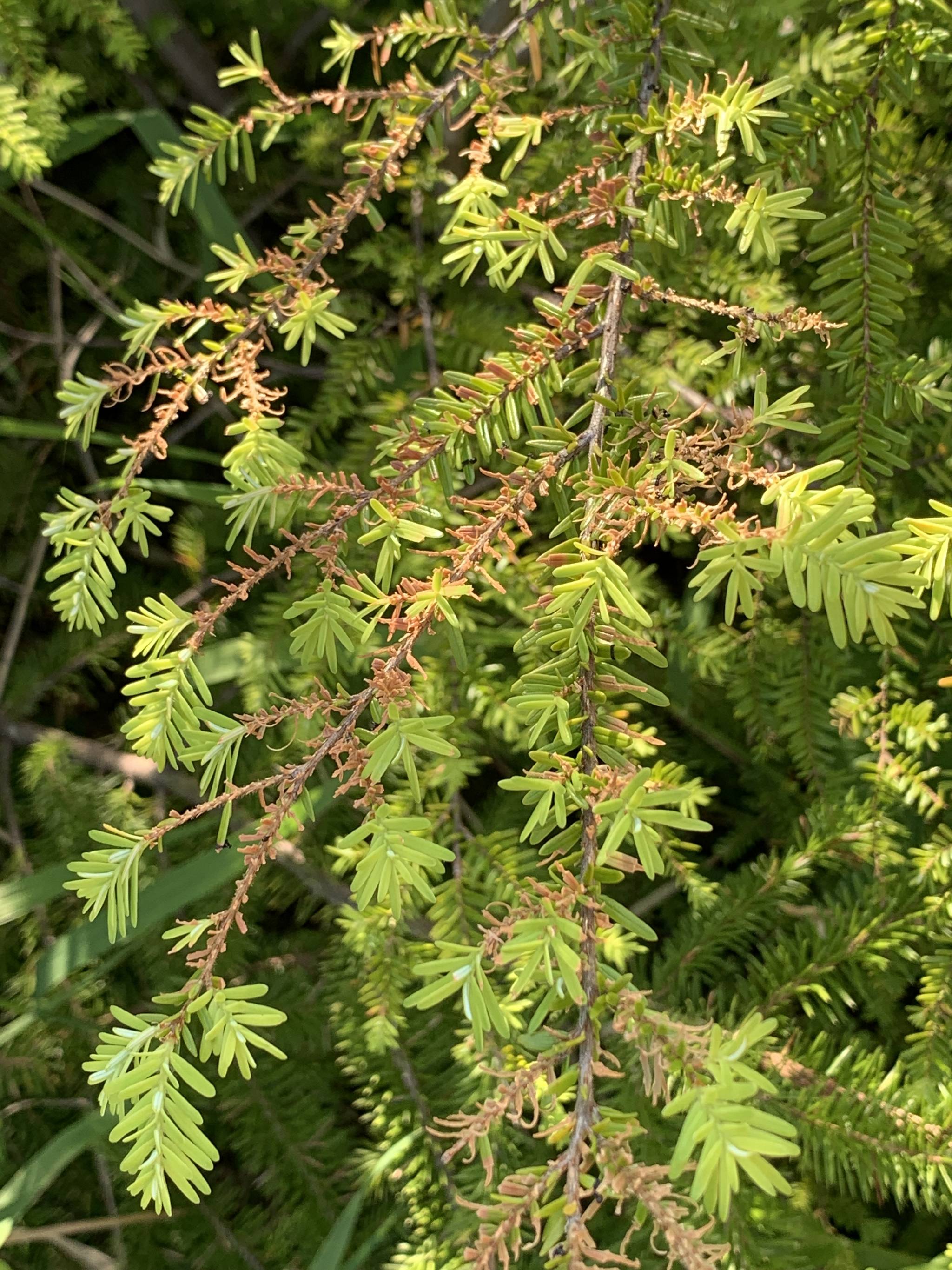A half-dozen browned hemlock trees is an unsettling sight for Juneau resident Lisa Meyers, especially when they’re in close vicinity of her home.
“I had to live in California for 25 years, so I’m kind of hyper-aware of the dangers of wildfire and that kind of thing,” Meyers, 53, said.
Meyers, who lives near Tee Harbor, found herself searching for answers earlier this month as hemlocks on her property went from green to partly brown to full-on brown in short order. Meyers initially assumed the trees were dying from a lack of precipitation, after all, the color change coincided with one of the longest dry weather spells in Juneau’s history and during a rare drought for the region.
Meyers contacted the U.S. Forest Service about it, and was put in touch with Elizabeth Graham, a Juneau-based entomologist. The needles were browning not because of drought stress, Graham explained, but because they were being eaten away by the hemlock sawfly. The insect larvae feast on the edges of hemlock needles, eating them from tip to base, turning them brown in the process.
Graham has received a number of similar concerned calls as the sawfly numbers spread and the tan-colored trees make more appearances. For the last year, Southeast has experienced a sawfly outbreak, but so far that hasn’t meant any damaging effects.
[Ecosystem ‘glue:’ Kids learn insect ins and outs at Bug Day]
“We want people to know that the trees aren’t dying even though they might look really bad,” Graham said. “They might be losing all their needles underneath, but as long as they still have that green growth in the new end, they should be able to recover. We might see this again next year, or it could crash and then we won’t see it again for a long time.”
Last summer, while Juneau’s hemlocks remained green, close 50,000 acres of trees to the south and west of town did not.
Sawfly larvae hatch in June and survive on hemlock needles until their pupation stage. When Southeast rainforests remain damp, a particular fungus feeds on the larvae and keeps the population of pests in check. However, when the weather in Southeast is drier than normal — like it has been for the last several years — the fungus is less prevalent and less damaging to the sawfly populations, according to Graham.
“Wherever there’s hemlock, sawflies are as well,” Graham said. “It’s just a matter of conditions being conducive for an outbreak to build up. One of the control factors is a fungus that helps limit their growth. When that is not abundant, the larvae are able to feed.”
Graham remains confident that the outbreak won’t kill off the hemlocks in Juneau, or anywhere elsewhere.
During recent ground surveys, Graham did not detect high levels of western blackheaded budworm. The budworms go after the same food as the sawfly larvae, and have the ability to kill of a tree when feasting on it together with sawflies.
One way to determine the presence of sawflies to stand underneath a hemlock and listen, said Graham. As the larvae feeds on the needles, it excretes tiny dirt-looking particles called “frass.”
“You can actually hear the sawfly larvae feeding and it’s frass raining down on the devil’s club,” Graham said. “If you look at the plants underneath it, you can see all that underneath.”
Meyers, who grew up in Juneau not far from where she lives now, had never witnessed such an event before.
“I’d never even heard of sawflies,” she said.
FYI
For more information on the sawfly outbreak, visit fs.usda.gov/main/r10/forest-grasslandhealth.
• Contact sports reporter Nolin Ainsworth at 523-2272 or nainsworth@juneauempire.com. Follow Empire Sports on Twitter at @akempiresports.

